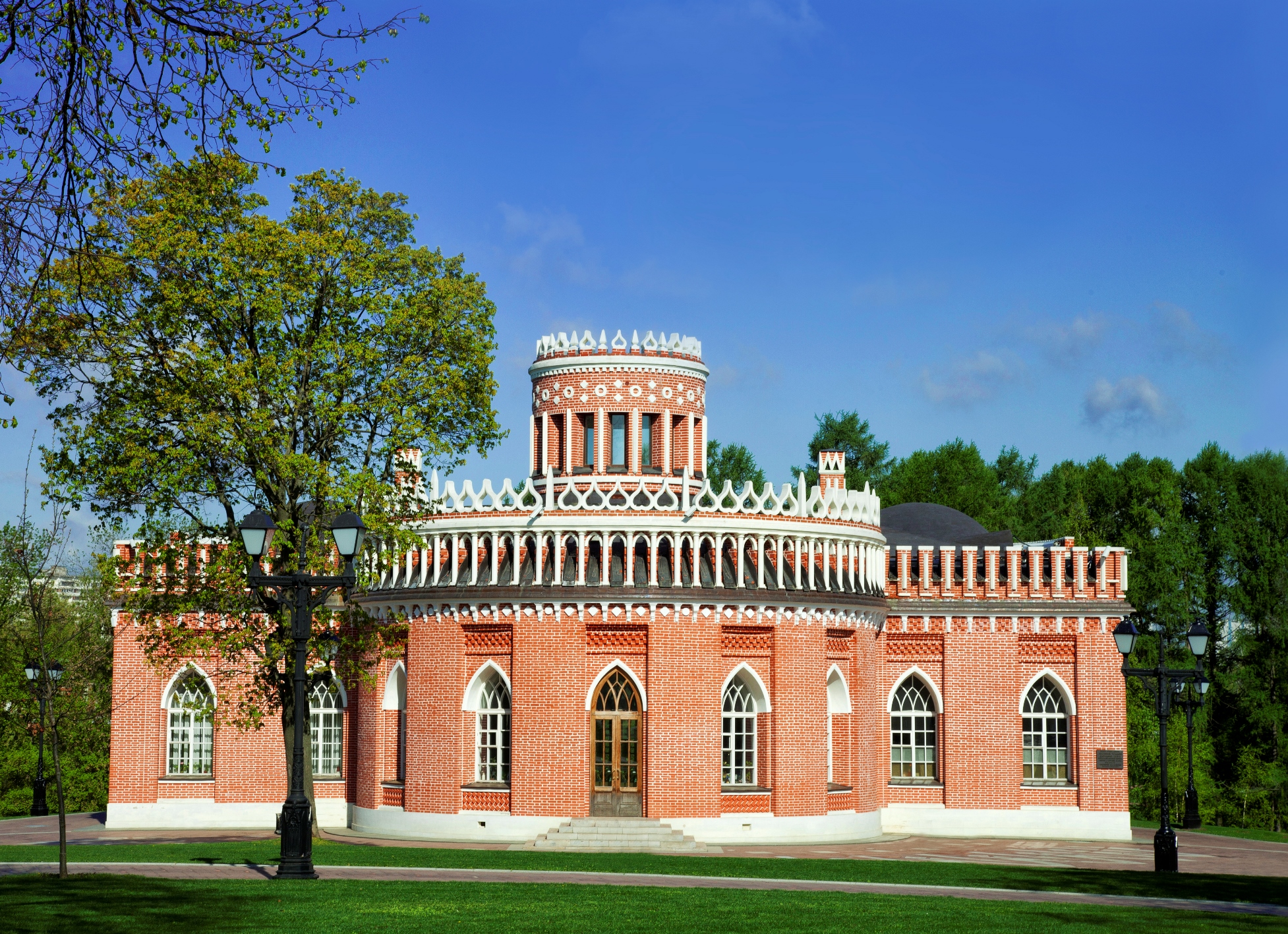Third Cavalry Building
Third Cavalry Building is one of the smaller buildings of the palace complex. Built in 1776/79, it was designed by the court architect Vasily Bazhenov. The architect called it “third building” or “small house”. The name is “cavalry building” is modern, it started being used only in 1947.
By its style and design, the Third Cavalry building is quite different from the other two Cavalry buildings. Scholars still can’t figure out its specific purpose. However, Catherine II thought it was important as you can see the corrections made by the Empress on the design plans.
Third Cavalry building stands on a picturesque hill near the Middle Tsaritsyno pond. It’s a one-storey brick building with lancet windows and rounded corners. It’s topped with a graceful pinnacle. Inside there is a round hall, which forms half a rotunda outside, according to Bazhenov’s design. Until the early 1830s, the Third Cavalry building was used as a restaurant and a hotel.
Later the building gradually deteriorated. The pinnacle collapsed. From 1872 it had been used as a dacha by Collegiate Advisor Ivan Davydov (he also rented all the Tsaritsyno greenhouses). As a result, the Third Cavalry building was much altered. Staircases were installed, the main entrance was moved and a large terrace was attached to the building.
After the revolution of 1917 Tsaritsyno was renamed Lenino and Third Cavalry building became the “Bolshevik Club of the Political and Sports Union of Youth” and later the Lenin Club.
In mid-1920s the entire palace and park was transferred to Glavnauka (an equivalent of the ministry of science and education). In 1927 to celebrate the 10th anniversary of the October Revolution Tsaritsyno Museum of History and Art was opened in the Third Cavalry building. It only took up a few rooms, but it was very popular, more than 20 thousand people visited it annually to see genuine collections of Bazhenov drawings and archeological finds from the burial mounds of the Vyatichy tribe.
In the 1930s, during collectivization, the museum was renamed Lenin Local History and Gardening Museum. The exposition was changed to showcase Soviet agricultural achievements. Portraits and chandeliers were replaced by replicas of tractors and plows. “Harvest Day” and “Spring Seed Campaign” exhibitions were held at the Third Cavalry building. In the end the museum started to lose popularity rapidly and was eventually closed.
From 1937 to 1973 the building hosted the district Culture House with a cinema and later the Construction Department of the Academy of Arts of the USSR. In 1984 the State Museum of Decorative and Applied Arts of the Peoples of the USSR opened in Moscow. Its first director, artist Ilya Glazunov managed to transfer the whole of Tsaritsyno under the auspices of the new museum. Third Cavalry building became the place for museum management and storage.
After the restoration works of 1998-2003 the building got back its historical appearance. Today the Third Cavalry building houses exhibition “Tsaritsyno’s Dachas.”

